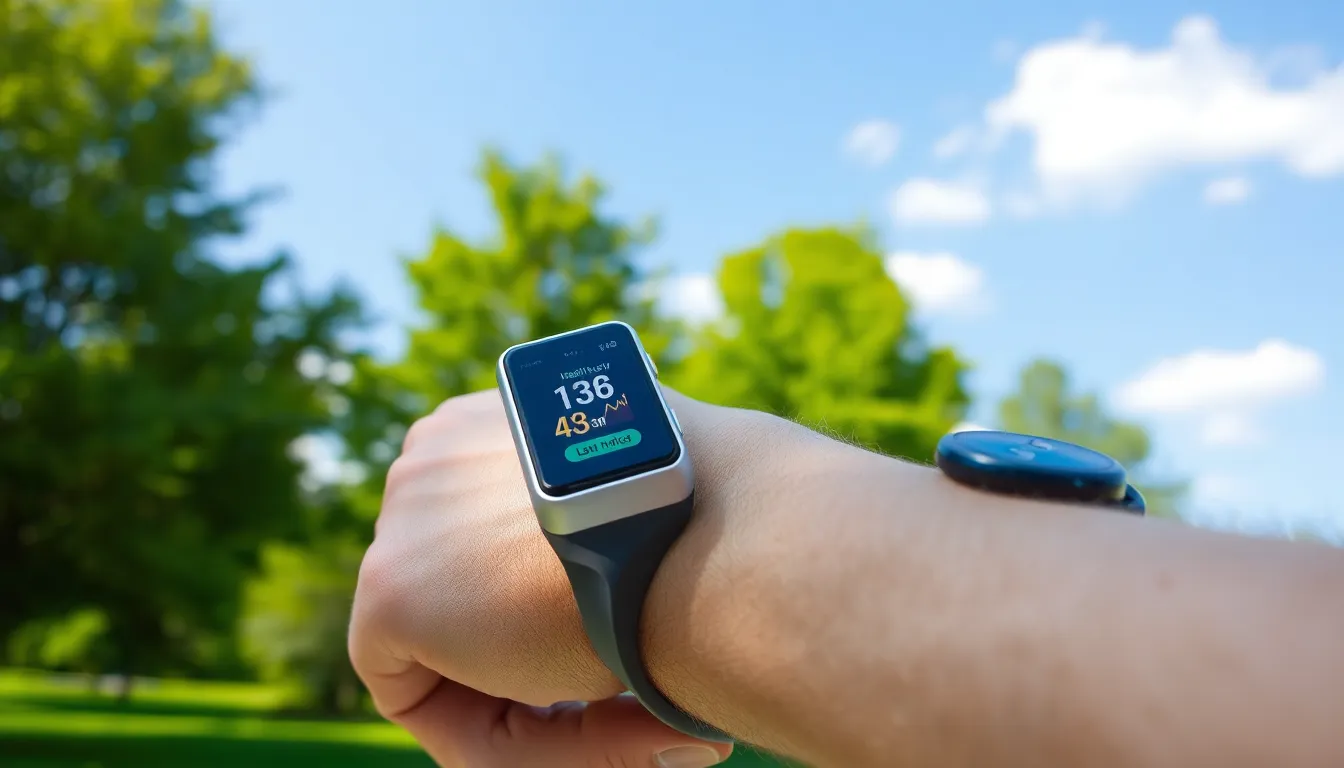Table of Contents
ToggleImagine a world where your watch isn’t just for telling time, but for telling you how many calories you burned while chasing your dog down the street. Welcome to the age of wearable intelligence, where gadgets are smarter than your average bear and can even give you a nudge when you’ve been sitting too long—because who doesn’t need a personal cheerleader reminding them to stand up?
These innovative devices are revolutionizing how people interact with technology and health. From fitness trackers to smart glasses, wearable intelligence is not just a trend; it’s a lifestyle upgrade. With data at their fingertips, users can monitor their health, improve productivity, and even manage stress levels—all while looking effortlessly cool. Buckle up as we dive into the fascinating world of wearable intelligence and discover how it’s reshaping our daily lives in ways we never thought possible.
Overview of Wearable Intelligence
Wearable intelligence encompasses a range of devices designed to enhance user interaction with technology and health. Fitness trackers, smartwatches, and smart glasses represent the forefront of this innovation. Such devices actively monitor physical activity, heart rate, and sleep patterns, providing valuable insights for users.
Activities tracked by these gadgets aid in goal setting and performance improvement. Tracking steps, calories burned, and sleep quality encourages individuals to maintain an active lifestyle. Moreover, smartwatches facilitate seamless access to notifications, calendars, and calls, promoting enhanced productivity.
Health metrics collected by wearable devices often integrate with mobile applications to analyze trends. Users gain the ability to assess their overall well-being over time, allowing for informed decisions regarding health and lifestyle changes. Stress management benefits arise from features such as guided breathing exercises and reminders to take breaks throughout the day.
Smart glasses, another facet of wearable intelligence, illustrate the technology’s potential for augmented reality applications. These devices provide contextual information, enabling users to access navigation, notifications, and real-time data without distraction. Enhanced situational awareness significantly benefits users in both personal and professional settings.
The growing prevalence of wearable technology signifies a shift in how individuals engage with their health and daily routines. Increased adoption among various age groups highlights the relevance and practicality of these devices in modern life. Wearable intelligence continues to shape a more connected and health-conscious society.
Key Features of Wearable Intelligence

Wearable intelligence incorporates a range of innovative features enhancing user engagement and health tracking. Key aspects include data collection methods and user interaction.
Data Collection Methods
Various data collection methods empower wearable devices to capture health metrics. Sensors monitor heart rate, sleep quality, and activity levels continuously, ensuring real-time insights. Algorithms analyze this data, delivering personalized feedback. Bluetooth connectivity allows the seamless transfer of collected data to paired smartphones. Wearable devices often use GPS for accurate location tracking, enhancing outdoor activity metrics. Integrating with mobile applications further enriches analysis, presenting trends over time for better decision-making.
User Interaction and Experience
User interaction plays a critical role in the effectiveness of wearable intelligence. Intuitive interfaces allow users to navigate apps easily, fostering engagement. Haptic feedback notifies users of alerts without interrupting daily activities. Visual displays provide immediate access to important information, such as notifications and fitness stats. Voice command functionalities enhance hands-free operation, making interactions smoother. Customizable settings empower users to receive information that aligns precisely with their goals. Such features enhance overall user experience, encouraging consistent device usage.
Applications of Wearable Intelligence
Wearable intelligence spans various sectors, enhancing daily life and work efficiency. These devices offer significant advantages in health, productivity, and home automation.
Health and Fitness Monitoring
Wearable devices excel in health and fitness monitoring. They track heart rate, step count, and sleep patterns, providing users with real-time insights into their health. Data collected helps individuals set realistic fitness goals. Many fitness trackers feature personalized workout plans that adapt based on performance. Smartwatches often include reminders for hydration and movement, encouraging an active lifestyle. Integration with mobile apps allows users to analyze historical data and trends, aiding in informed decision-making regarding their health.
Workplace Efficiency
In the workplace, wearable intelligence enhances productivity and communication. Devices like smartwatches facilitate quick access to notifications and calls, reducing distractions. Wearable technology tracks employee performance metrics, enabling more efficient time management. Some businesses utilize wearables for project management, allowing teams to collaborate seamlessly. Furthermore, stress management features, such as breathing exercises, help employees maintain focus and reduce anxiety during busy workdays. Enhanced connectivity between wearables and various applications improves workflow efficiency.
Smart Home Integration
Smart home integration represents another vital application of wearable intelligence. Wearable devices connect with smart home systems, allowing users to control lighting, temperature, and security. Accessibility features enable voice commands for smoother interactions with home devices. Many wearables also send alerts for unusual activity or environmental changes, enhancing security. Users can automate routines, triggering specific actions based on their location or preferences. Such integration supports a more comfortable, adaptive living environment that aligns with user needs.
Future Trends in Wearable Intelligence
Wearable intelligence is entering an exciting phase of development, shaped by technological advancements and emerging challenges. The future promises enhanced functionalities that will redefine user experiences.
Advancements in Technology
Smart fabrics and embedded sensors represent significant progress in wearable technology. These innovations enable seamless integration of health monitoring capabilities into everyday clothing. Machine learning algorithms provide personalized insights, making data analysis more relevant. Augmented reality features are adding new dimensions to wearables, enhancing interactivity. Additionally, improvements in battery life support extended usage without frequent recharging. Wireless charging solutions further streamline the user experience. Enhanced connectivity, such as 5G integration, allows for quicker data transfer and real-time communication. These advancements will play crucial roles in elevating user engagement and satisfaction in wearable devices.
Potential Challenges
Data privacy concerns remain a significant hurdle for wearable intelligence. Users often fear unauthorized access to sensitive health information. Integrating wearable devices with existing health systems may lead to interoperability issues, complicating user experiences. Moreover, reliance on technology increases risks related to data accuracy. Users could encounter overwhelming amounts of information, making it difficult to derive actionable insights. Addressing battery life limitations will remain essential, particularly as devices become more sophisticated. Regulation of wearable technology also presents challenges, requiring companies to adhere to legal and ethical standards. Balancing innovation with user protection will define the future landscape of wearable intelligence.
Wearable intelligence is reshaping how individuals interact with technology and their health. As these devices become more integrated into daily life they empower users to make informed decisions about their well-being. The advancements in technology promise even greater personalization and functionality in the future.
While challenges remain regarding data privacy and user experience it’s clear that the benefits of wearable intelligence far outweigh the drawbacks. As society embraces these innovations the potential for improved health management and productivity continues to grow. The journey of wearable technology is just beginning and its impact will undoubtedly be profound in the years to come.




